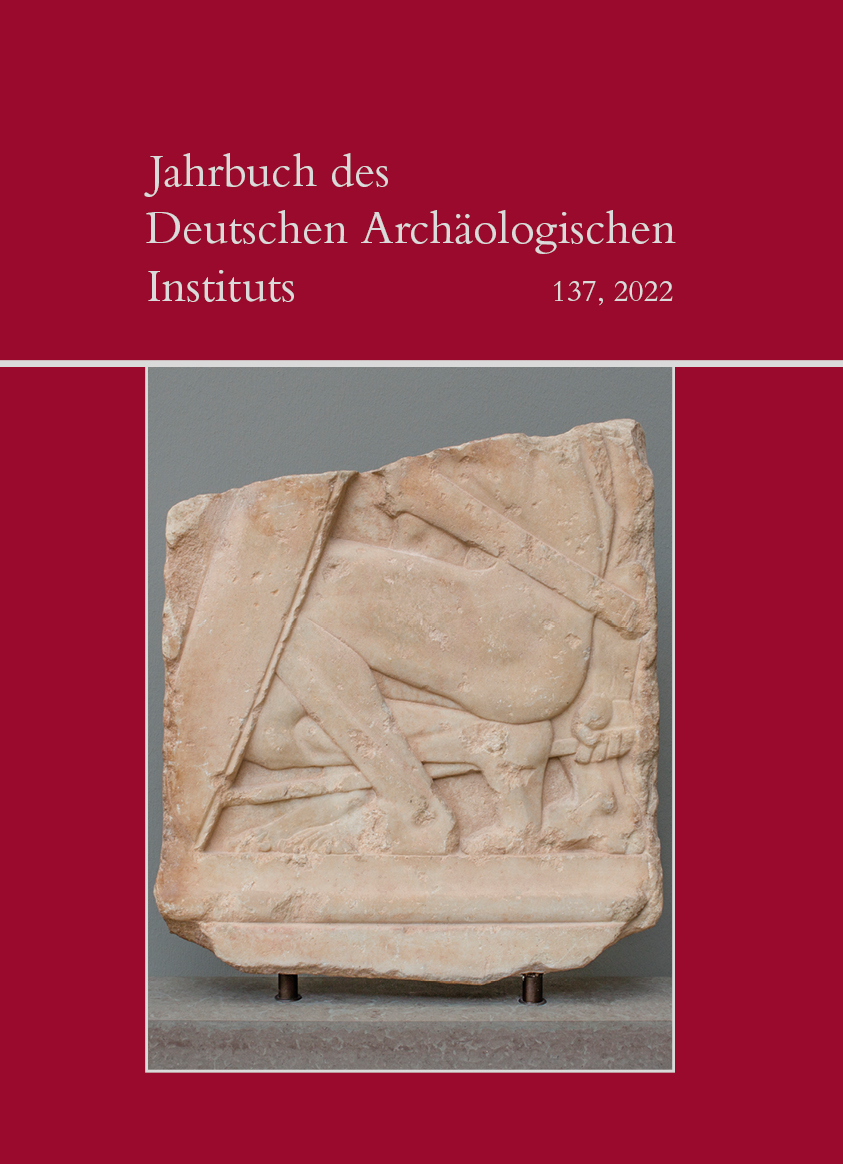Die Silberbecher von Hoby
Narrative Strategie und diskursive Kontexte
https://doi.org/10.34780/3u1f-53x3
Abstract
In 1920 a pair of high-quality Roman silver cups was discovered alongside other objects in the grave of a Germanic chieftain in Hoby, Denmark. The cups were immediately considered as a diplomatic gift of a high-ranking Roman official. Accordingly, the mythological scenes on the Achilles cup were perceived as an allusion to Roman dominance in the age of Augustus and to the person of the emperor in particular. The aim of this paper is to reconsider the interpretation of the Hoby cups with regard to their complex object biography. I argue that any interpretation of the mythological scenes of the cups should start with their primary context, i.e. the Roman convivium. In this context the scenes were probably meant to inspire a conversation about the different roles of guests and hosts. It is this primary conception of the cups as contrasting exempla that an interpretation in their later context(s) should depart from. With regard to the well-established interpretation of the cups as diplomatic gifts I argue that in the context of a Roman diplomatic mission the meeting of Priam and Achilles on the Achilles cup was probably conceived as an exemplum of two military leaders who reached an agreement despite the actual military confrontation of their respective parties.
Keywords:
Achilles, Philoctetes, Hoby, Silver Cup, convivium





